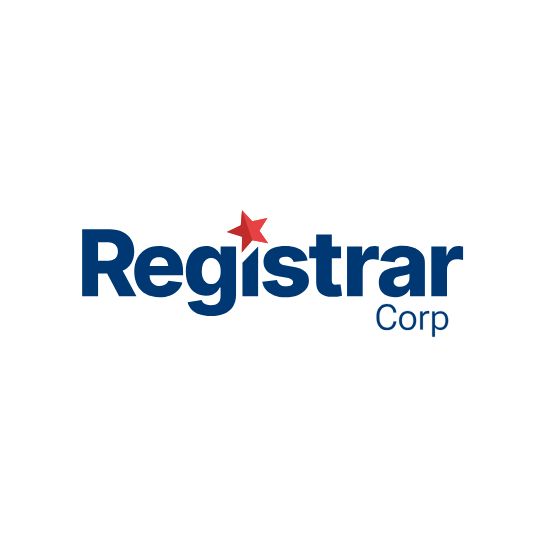Batch traceability is an essential component of Good Manufacturing Practices (GMP) in cosmetics manufacturing, as outlined in ISO 22716 guidelines. This framework emphasizes meticulous record-keeping, quality control, and transparency at every stage of production, helping manufacturers uphold quality and maintain compliance. Effective batch traceability not only fulfills regulatory requirements but also ensures product safety, supports recall procedures, and fosters consumer trust.
This article explores ISO 22716’s batch traceability guidelines and why they matter.
What is ISO 22716?
ISO 22716 is an internationally recognized standard for Good Manufacturing Practices (GMP) specifically designed for the cosmetics industry. It provides guidelines covering various aspects of production, quality control, and distribution, with a particular focus on product safety, risk management, and traceability.
Among its core principles, ISO 22716 emphasizes thorough batch traceability, requiring detailed documentation of every stage of production, from sourcing raw materials to distributing the final product. This ensures that each batch’s history is fully traceable, which is essential for maintaining quality and enabling rapid responses to any safety or compliance issues.
In recent years, the U.S. Modernization of Cosmetics Regulation Act (MoCRA) has introduced new regulations aligning closely with ISO 22716 standards, particularly in traceability requirements.
MoCRA mandates a high level of transparency and traceability for cosmetics products sold in the US, mirroring ISO 22716’s approach. This convergence between ISO 22716 and MoCRA reinforces the importance of comprehensive batch traceability in ensuring product safety and compliance.
Key Crossover Points Between ISO 22716 and MoCRA on Traceability
- Record-Keeping and Documentation Requirements: Both ISO 22716 and MoCRA emphasize the need for meticulous record-keeping. Under MoCRA, cosmetics companies must maintain detailed records that enable traceability of all ingredients and production steps, similar to ISO 22716’s requirement for batch documentation. This includes tracking raw materials, production processes, and distribution points for each batch, allowing companies to quickly trace back any potential issues.
- Recall Preparedness: MoCRA, like ISO 22716, requires companies to have systems in place to manage recalls efficiently if a product safety issue arises. With ISO 22716’s batch traceability guidelines, cosmetics manufacturers are better equipped to isolate affected batches and recall products quickly and effectively. This crossover with MoCRA ensures that any U.S.-bound product can be traced with precision in the event of a safety concern.
- Consumer Safety and Transparency: Both standards aim to enhance consumer safety by implementing traceability measures that make it easier to identify the origins of each product batch. By adhering to ISO 22716, companies can fulfill MoCRA’s requirement to ensure transparency regarding product origins and components, boosting consumer confidence in the safety and quality of cosmetics products.
- Audit and Inspection Compliance: As part of MoCRA’s compliance protocols, the FDA now has greater authority to conduct inspections of cosmetics manufacturing facilities. ISO 22716’s structured approach to batch traceability and documentation positions companies well for these inspections, providing clear, accessible records that demonstrate compliance with both ISO and FDA requirements.
Together, ISO 22716 and MoCRA create a robust framework for cosmetics traceability, supporting quality control, regulatory compliance, and consumer safety in tandem. By adhering to these guidelines, cosmetics companies can manage their production processes effectively, ensuring both compliance and high standards of safety and transparency.
The Importance of Batch Traceability in GMP Compliance
Batch traceability is a cornerstone of ISO 22716, as it directly supports product safety, quality control, and regulatory compliance. This level of detail allows cosmetics manufacturers to monitor each stage of production and distribution closely, enhancing their ability to manage issues swiftly and meet compliance standards. Here are key reasons why batch traceability is essential:
- Rapid Response to Quality Issues: By maintaining complete records of each batch, companies can identify and isolate quality issues faster. If a contamination or defect is detected in a specific batch, batch traceability enables manufacturers to pinpoint the issue’s source, assess its scope, and take swift corrective action to protect consumer safety.
- Efficient Recall Management: In the event of a product recall, batch traceability enables manufacturers to isolate and remove only the affected products from the market, rather than issuing a costly and reputation-damaging full recall. This targeted approach not only minimizes financial loss but also maintains consumer trust by demonstrating a proactive, transparent response to any safety concerns.
- Regulatory Compliance: As regulatory bodies like the FDA increase oversight, batch traceability ensures that companies have the necessary documentation to demonstrate compliance. This is especially relevant for U.S. market access under MoCRA, as cosmetics companies must meet stringent record-keeping and traceability standards. ISO 22716’s focus on documentation and batch records prepares companies for both domestic and international audits, providing clear records for inspections and audits.
- Supply Chain Transparency: With batch traceability, companies can ensure each ingredient and material meets their quality and safety standards. Traceability improves supply chain visibility by documenting sourcing information for raw materials, which is particularly valuable when working with third-party suppliers. This transparency not only reinforces product safety but also enables manufacturers to verify ingredient origin and quality, enhancing the brand’s reputation for responsible sourcing.
- Quality Assurance and Consistency: Batch traceability ensures that each product is manufactured to the same standards of quality and consistency. By tracking each batch throughout the production process, companies can verify adherence to quality control measures, ultimately supporting a consistent product that aligns with consumer expectations and brand integrity.
- Data-Driven Quality Improvements: Detailed records on each batch’s production and performance enable companies to analyze trends and identify potential areas for improvement. This data helps manufacturers optimize production processes, improve product formulations, and implement preventive measures to minimize future risks, fostering a culture of continuous improvement.
By implementing batch traceability as part of ISO 22716 guidelines, cosmetics manufacturers not only comply with regulatory requirements but also create a resilient framework for quality and risk management. This approach not only reinforces product quality and safety but also supports sustainable business practices, empowering companies to build long-term consumer trust and enhance operational efficiency.
Implementing Batch Traceability in ISO 22716-Compliant Cosmetics Manufacturing
Implementing batch traceability in compliance with ISO 22716 involves a structured approach that integrates record-keeping, quality control measures, and supply chain transparency. For cosmetics manufacturers, the goal is to create a system that can capture and store data for each stage of production, ensuring that every batch is fully documented and traceable from raw material sourcing to distribution.
Below are essential steps to successfully implement batch traceability in line with ISO 22716 guidelines:
Develop a Detailed Traceability Framework
The foundation of effective traceability lies in a structured framework that defines key checkpoints, such as ingredient sourcing, production, packaging, and distribution. This framework should clearly specify the data to be recorded at each stage, including lot numbers, supplier information, processing dates, and quality control metrics
By establishing and following a clear traceability framework, companies can maintain consistency in record-keeping, reduce the likelihood of errors, and ensure that each batch meets the same high-quality standards.
Utilize Unique Batch Numbers
Assigning a unique identifier to each batch allows companies to track it through every step of the manufacturing process. This identifier links back to critical information about raw materials, processing conditions, and quality checks.
Batch numbers should be stored and referenced in production logs, quality assurance reports, and shipping records, enabling manufacturers to trace products quickly and accurately in case of quality concerns or recalls.
Automate Record-Keeping for Efficiency and Accuracy
Implementing digital record-keeping systems, such as ERP (Enterprise Resource Planning) software or specialized traceability solutions like Cosmetri, helps streamline data entry and minimizes human error. Automated systems can log production data in real time, maintain records securely, and provide easy access for audits and inspections.
Using digital systems, manufacturers can centralize their data storage, making it easier to track batches across different locations and stages, while also facilitating faster retrieval during audits or recalls.
Integrate Quality Control at Each Stage
Quality control (QC) checks are essential at every stage, from incoming raw materials to final packaging. For example, materials received from suppliers should be inspected and tested before entering production. QC measures should be applied consistently, with results recorded for each batch.
By incorporating QC data into batch records, manufacturers can quickly identify deviations from standards, assess potential impacts on the final product, and take corrective actions before products reach consumers.
Train Staff on Traceability and Compliance Requirements
Effective traceability requires that all team members understand their role in the process, from production operators to quality assurance staff. Comprehensive training ensures employees know how to record data accurately, manage documentation, and follow traceability protocols.
Training should cover specific compliance requirements under ISO 22716 and related regulations, such as MoCRA, emphasizing the importance of traceability for safety, compliance, and consumer trust.
Conduct Regular Audits and Verification
Routine audits and verifications are critical to confirm that the traceability system is working effectively. These audits should assess the completeness of batch records, accuracy of information, and compliance with ISO 22716 guidelines.
Audits also provide an opportunity to identify gaps in the traceability process and implement improvements, such as updating procedures or addressing any compliance challenges discovered during the review.
Establish a Recall and Crisis Management Plan
In case of a product issue, batch traceability is instrumental in isolating and removing affected products swiftly. A well-defined recall plan should outline the procedures for identifying compromised batches, notifying relevant parties, and retrieving products from the market.
Preparing a crisis management plan alongside the recall protocol ensures companies can respond effectively to emergencies, minimizing harm to consumers and protecting the brand’s reputation.
Collaborate with Suppliers for Full Supply Chain Visibility
To ensure complete traceability, manufacturers must work closely with suppliers to track ingredient sourcing and quality. Suppliers should adhere to ISO 22716 or equivalent quality standards, documenting each batch’s journey through the supply chain.
Establishing supplier partnerships with traceability requirements strengthens end-to-end transparency, supporting consistent product quality and compliance.
By following these steps, cosmetics manufacturers can establish a robust batch traceability system that not only meets ISO 22716 standards but also supports efficient, safe, and compliant production processes. With a fully integrated traceability program, companies enhance their ability to protect consumers, quickly resolve quality issues, and uphold brand integrity in a competitive market.
How Cosmetri Enhances Batch Traceability for ISO 22716 Compliance
Cosmetri’s software provides tools specifically designed to support batch traceability and GMP compliance in the cosmetics industry. Here’s how it facilitates ISO 22716 batch traceability:
- Batch Tickets and Dispense Lists: Cosmetri’s software enables manufacturers to generate batch tickets with detailed production instructions and dispense lists for raw materials, ensuring consistency and accuracy in production.
- In-Process Testing Integration: Quality control is seamlessly incorporated within the production workflow, allowing for real-time monitoring and automatic documentation of test results.
- Centralized Batch Records: Cosmetri centralizes batch records, making them easily accessible and ensuring they meet ISO 22716’s documentation standards. This supports rapid retrieval during inspections and audits.
By implementing Cosmetri’s software, cosmetics manufacturers can streamline batch traceability processes, ensure compliance with ISO 22716, and improve overall production quality. This not only supports regulatory adherence but also enhances operational efficiency and consumer trust, safeguarding both the product and brand.









